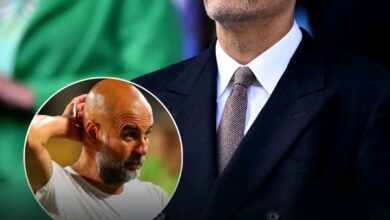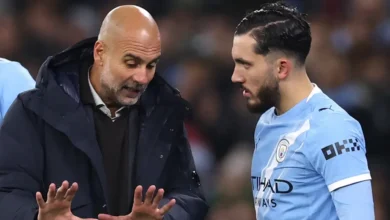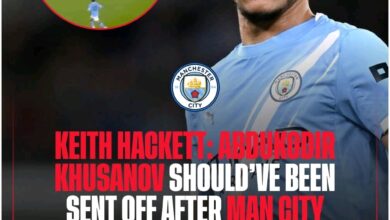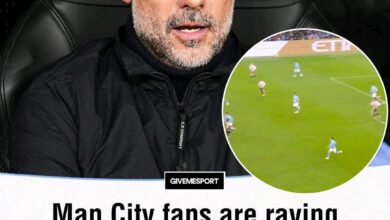The summer transfer window reopens for business on Monday, with many deals still to be concluded by Premier League clubs
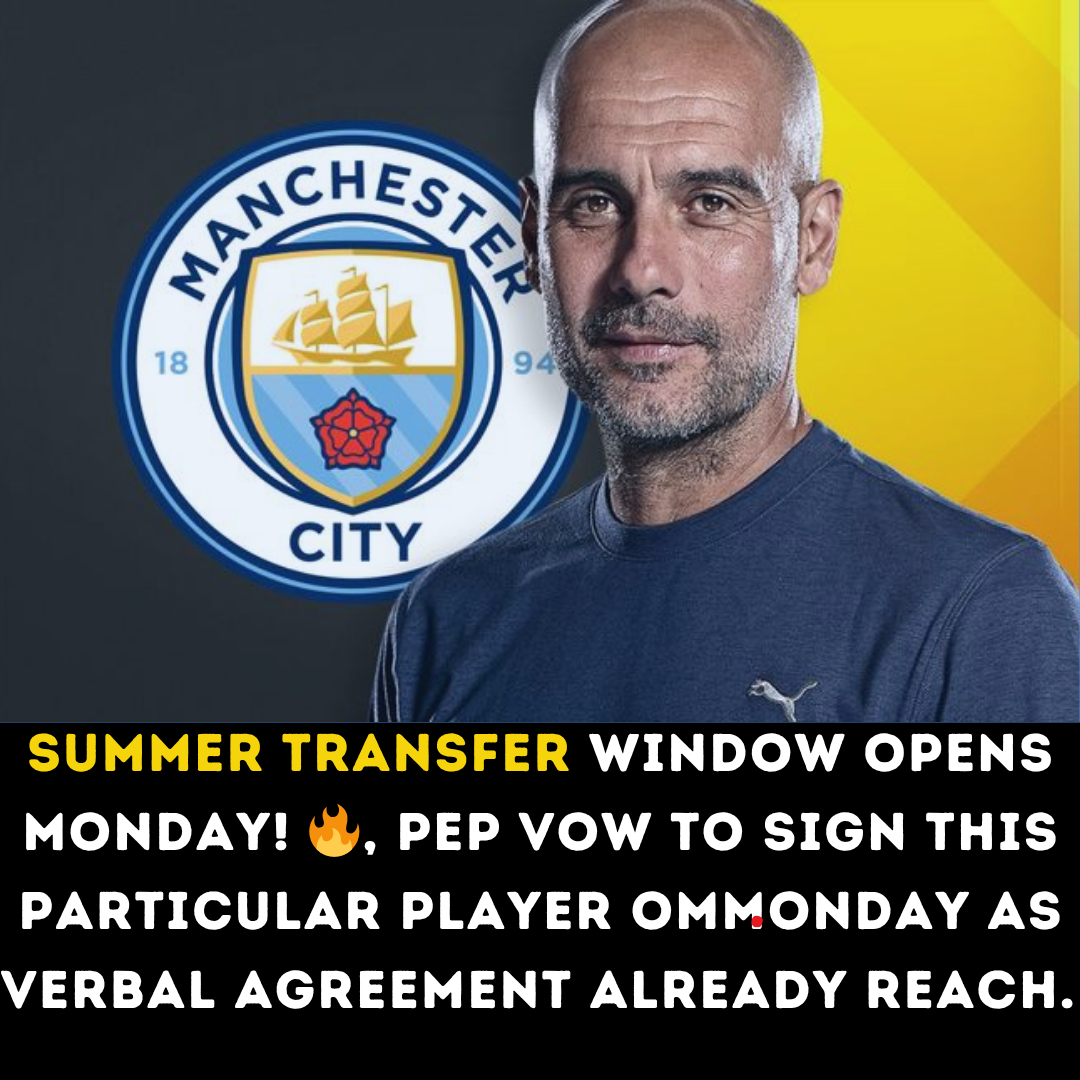
The Premier League transfer landscape has undergone a seismic shift in 2025, with the introduction of an unprecedented dual-window system that has fundamentally altered how clubs approach their summer business. As the main summer transfer window prepares to reopen on Monday, June 16th, the football world finds itself in uncharted territory following the conclusion of the inaugural pre-Club World Cup window that delivered ten days of unprecedented transfer drama and nearly half a billion pounds in spending.
This revolutionary approach to the transfer market, implemented specifically to accommodate the expanded FIFA Club World Cup format, has created a fascinating dynamic where Premier League clubs have been forced to recalibrate their strategic planning, accelerate decision-making processes, and adapt to a compressed timeline that has already yielded some of the most significant signings in recent memory. The implications of this new system extend far beyond mere scheduling convenience, fundamentally reshaping how clubs approach squad building, financial planning, and competitive positioning.
The first window, which concluded with typical deadline day drama, has set the stage for what promises to be one of the most compelling and consequential summer transfer periods in Premier League history. With the traditional September 1st deadline still looming, clubs now face the unique challenge of building upon their early acquisitions while navigating the complex web of international tournaments, pre-existing contractual obligations, and the ever-present pressure to strengthen their squads for the upcoming domestic and European campaigns.
The Financial Landscape: Record-Breaking Spending Patterns
The financial implications of the revised transfer window system have been staggering, with Premier League clubs demonstrating an appetite for investment that has surprised even the most seasoned transfer market observers. The nearly £500 million expenditure during the brief ten-day period represents a fundamental shift in how clubs approach their summer business, with many front-loading their most significant acquisitions to ensure key players are available for the prestigious Club World Cup tournament.
Manchester City emerged as the window’s most prolific spenders, with Pep Guardiola’s side investing £116.3 million in a comprehensive squad overhaul following what many considered a disappointing previous campaign by their exceptionally high standards. The Citizens’ aggressive approach, highlighted by the acquisitions of Tijjani Reijnders (£46.3m), Rayan Cherki (£34m), Rayan Ait Nouri (£36m), and Marcus Bettinelli, represents a clear statement of intent from a club determined to reassert its dominance both domestically and on the continental stage.
The strategic timing of City’s business, with three of their four signings announced on deadline day, demonstrates the sophisticated planning and execution capabilities that have become hallmarks of their transfer operations under the current ownership structure. This approach not only secured their primary targets but also maintained the element of surprise that has become increasingly valuable in today’s hyper-competitive transfer market.
Liverpool’s stunning acquisition of Florian Wirtz for a British-record £116.5 million represents perhaps the most significant statement of the window, signaling the Merseyside club’s determination to build upon their recent success and establish themselves as long-term contenders for both domestic and European honors. The German playmaker’s decision to choose Liverpool over Bayern Munich speaks volumes about the club’s current trajectory and the persuasive power of manager Jürgen Klopp’s project.
Manchester United’s Aggressive Approach: Setting the Pace
Manchester United’s £62.5 million acquisition of Matheus Cunha from Wolverhampton Wanderers stands as the window’s most expensive individual transfer, representing a clear indication of the club’s renewed ambition under the stewardship of Ruben Amorim. The Brazilian forward’s arrival at Old Trafford not only addresses a critical need in the final third but also demonstrates United’s willingness to compete financially with their domestic and European rivals for top-tier talent.
The significance of the Cunha signing extends beyond its immediate impact on United’s attacking options. The transfer represents a philosophical shift in the club’s approach to the market, moving away from the scattergun methodology that has characterized much of their recent transfer activity toward a more focused, strategic approach that targets specific profiles capable of making immediate contributions to the first team.
United’s pursuit of Brentford’s Bryan Mbeumo, with their initial £55 million bid being rejected by the Bees, illustrates the club’s determination to build upon their early success in the window. The Cameroon international’s versatility and proven Premier League pedigree make him an attractive proposition for Amorim’s system, while his potential arrival would provide the tactical flexibility that has become increasingly important in modern football.
The competition from Tottenham for Mbeumo’s signature adds an intriguing subplot to United’s transfer planning, particularly given the player’s reported preference for a move to North London following Thomas Frank’s appointment as Spurs’ new head coach. This development highlights the complex dynamics that often influence player decision-making processes, where factors beyond pure sporting ambition and financial considerations can play decisive roles in determining final destinations.
Chelsea’s Deadline Day Drama: Ambition Meets Reality
Chelsea’s deadline day pursuit of AC Milan goalkeeper Mike Maignan and Borussia Dortmund winger Jamie Gittens provided the window’s most compelling narrative, showcasing both the ambition and the occasional frustration that characterizes modern transfer negotiations. The Blues’ unsuccessful attempts to secure both players illustrate the challenges faced by even the most well-resourced clubs when dealing with sellers who maintain firm valuations for their prized assets.
The Maignan saga, which concluded around lunchtime on deadline day, demonstrated the pragmatic approach that has begun to characterize Chelsea’s transfer strategy under their current ownership structure. The club’s unwillingness to exceed their £12 million valuation for a goalkeeper entering the final year of his contract represents a significant departure from the free-spending approach that defined much of their previous transfer activity.
Similarly, Chelsea’s pursuit of Gittens, culminating in a rejected £42 million bid with Dortmund demanding closer to £55 million, highlights the delicate balance between ambition and financial prudence that has become increasingly important in the current regulatory environment. The club’s decision to walk away rather than meet Dortmund’s valuation demonstrates a more disciplined approach to transfer negotiations, while their stated intention to revisit the deal later in the summer suggests a long-term strategic perspective.
The signing of Liam Delap from Ipswich for £30 million, alongside the acquisitions of Mamadou Sarr and Dario Essugo, represents Chelsea’s commitment to building for both immediate success and long-term sustainability. Delap’s proven Championship pedigree and age profile align perfectly with the club’s emerging transfer philosophy, which emphasizes the acquisition of players capable of contributing immediately while retaining significant resale value.
Liverpool’s Record-Breaking Statement: The Wirtz Revolution
Liverpool’s acquisition of Florian Wirtz represents far more than a simple transfer; it constitutes a seismic shift in the global transfer landscape and establishes new benchmarks for Premier League spending power. The £116.5 million fee, which surpasses all previous British transfer records, demonstrates the Merseyside club’s determination to compete at the highest level of the international transfer market.
Wirtz’s decision to choose Liverpool over Bayern Munich represents a significant coup for the Premier League, illustrating the league’s continued ability to attract the world’s most coveted talents. The German international’s versatility, creativity, and goal-scoring ability from midfield positions make him an ideal fit for Klopp’s high-intensity playing style, while his age profile ensures that Liverpool have secured a player capable of contributing at the highest level for many years to come.
The departure of Trent Alexander-Arnold to Real Madrid for £10 million, while representing a significant loss of homegrown talent and leadership, has been offset by the arrival of Jeremie Frimpong from Bayer Leverkusen for £29.5 million. The Dutch defender’s pace, attacking prowess, and European experience make him a natural successor to Alexander-Arnold’s role in Liverpool’s system, while his relatively modest transfer fee represents excellent value in the current market.
Liverpool’s pursuit of Bournemouth left-back Milos Kerkez illustrates the club’s commitment to comprehensive squad development across all positions. The Hungarian international’s combination of defensive solidity and attacking threat aligns perfectly with the demands of modern full-back play, while his age and potential for further development make him an attractive long-term investment.
Arsenal’s Strategic Patience: Building for Sustained Success
Arsenal’s relatively restrained approach to the initial transfer window reflects a more measured, strategic perspective on squad development that prioritizes long-term sustainability over short-term headline acquisitions. The Gunners’ focus on Benjamin Sesko as their primary striker target demonstrates a clear understanding of their tactical requirements and a willingness to wait for the right player rather than settling for available alternatives.
The competition with Al Hilal for Sesko’s signature provided an interesting glimpse into the evolving dynamics of the global transfer market, where traditional European powerhouses increasingly find themselves competing with financially powerful clubs from emerging leagues. Sesko’s preference for European football, despite the substantial financial incentives available in Saudi Arabia, suggests that sporting ambition remains a decisive factor for many elite players.
Arsenal’s pursuit of Real Madrid’s Rodrygo as a left-wing option represents ambitious thinking from Mikel Arteta’s side, targeting a player of proven quality and versatility who would significantly enhance their attacking options. The Brazilian’s experience at the highest level of European football, combined with his ability to operate across multiple forward positions, makes him an ideal addition to Arsenal’s evolving tactical system.
The potential acquisition of Kepa Arrizabalaga from Chelsea for £5 million represents shrewd business in the goalkeeper market, securing an experienced Premier League operator at a fraction of his peak valuation. The Spanish international’s technical ability and distribution skills align perfectly with Arsenal’s possession-based playing style, while his relatively modest cost allows resources to be allocated toward higher-priority positions.
Tottenham’s Transition: New Leadership, New Direction
Tottenham’s appointment of Thomas Frank as head coach following Ange Postecoglou’s dismissal has introduced an element of uncertainty into their transfer planning, with the new manager requiring time to assess the existing squad and identify areas for improvement. Frank’s proven ability to maximize limited resources at Brentford suggests a more pragmatic approach to squad building than his predecessor’s expansive philosophy.
The competition with Manchester United for Bryan Mbeumo’s signature represents Tottenham’s first major test under Frank’s leadership, with the player’s reported preference for North London providing encouragement for Spurs supporters. Mbeumo’s versatility, work rate, and proven Premier League experience make him an ideal fit for Frank’s systematic approach to team building.
Tottenham’s interest in Bournemouth’s Antoine Semenyo, valued at £70 million by the south-coast club, demonstrates the club’s continued ambition to compete for top-tier talent despite the recent managerial change. The Ghanaian forward’s pace, directness, and goal-scoring ability from wide positions align perfectly with the demands of Premier League football, while his age profile suggests significant potential for further development.
The Broader Market Dynamics: Clubs Adapting to New Realities
The introduction of the dual-window system has created fascinating ripple effects throughout the Premier League ecosystem, with clubs of all sizes forced to adapt their strategic planning to accommodate the compressed timeline and increased competition for limited resources. Bournemouth’s remarkable £50 million profit from player sales, headlined by Dean Huijsen’s move to Real Madrid, demonstrates how well-run clubs can leverage market conditions to their advantage.
Sunderland’s record-breaking sale of Jobe Bellingham to Borussia Dortmund for £32 million illustrates the global appeal of English talent and the increasing willingness of continental clubs to invest significant resources in young players with proven potential. The Black Cats’ ability to reinvest immediately in Enzo Le Fee for £20 million shows how strategic planning can create sustainable cycles of improvement and development.
The fact that twelve Premier League clubs remain without major summer signings heading into the reopened window suggests that the most significant business is yet to come. This backloading of transfer activity creates the potential for a frenzied period of negotiations and completed deals as clubs race to finalize their squads before the September 1st deadline.
Tactical and Strategic Implications
The evolving transfer patterns observable in the early window reveal significant insights into how Premier League clubs are adapting their tactical approaches to meet the demands of modern football. The emphasis on versatile players capable of operating in multiple positions reflects the increasing importance of squad depth and tactical flexibility in managing the demands of domestic and European competition.
Manchester City’s acquisitions demonstrate a clear preference for technically gifted players capable of implementing Guardiola’s possession-based philosophy, while Liverpool’s signings suggest a continued commitment to high-intensity, pressing-based football that has defined their recent success. These contrasting approaches highlight the diversity of tactical thinking within the Premier League and the corresponding variety in transfer strategies.
The increasing prominence of data analytics in transfer decision-making is evident in the precision with which clubs have targeted specific player profiles that align with their tactical requirements. This scientific approach to recruitment has reduced the element of chance traditionally associated with player acquisitions while increasing the likelihood of successful integration into existing team structures.
Financial Fair Play and Regulatory Considerations
The substantial spending observed during the initial window raises important questions about compliance with Financial Fair Play regulations and the broader sustainability of current investment levels. UEFA’s evolving approach to financial monitoring requires clubs to demonstrate long-term viability while maintaining competitive squad quality, creating complex strategic challenges for decision-makers.
The timing of major acquisitions within the compressed window format may influence how clubs structure their financial obligations, with payment schedules and add-on clauses becoming increasingly sophisticated instruments for managing cash flow and regulatory compliance. This financial engineering represents an often-overlooked aspect of modern transfer negotiations that can prove decisive in completing complex deals.
The relationship between transfer spending and commercial revenue generation continues to evolve, with clubs increasingly viewing high-profile signings as marketing investments capable of driving global brand recognition and corresponding commercial opportunities. This dual-purpose approach to player acquisitions reflects the sophisticated business thinking that now characterizes elite football operations.
International Implications and Global Market Dynamics
The Premier League’s continued ability to attract the world’s most coveted talents speaks to the league’s unique combination of financial resources, competitive quality, and global reach. The success in securing players like Wirtz and Cunha ahead of continental rivals demonstrates the league’s growing influence in shaping global transfer patterns.
The increasing involvement of clubs from emerging markets, particularly in the Middle East, has introduced new dynamics into traditional transfer negotiations. While players like Sesko ultimately chose European options, the financial power of these emerging leagues continues to influence market valuations and player expectations across the global football ecosystem.
The impact of international tournaments and scheduling considerations has become increasingly complex, with clubs required to balance immediate competitive needs against longer-term player welfare and performance optimization. This multifaceted planning requirement has elevated the importance of medical and sports science expertise in transfer decision-making processes.
Looking Ahead: The Road to September 1st
As the main transfer window prepares to reopen, the foundation laid during the initial ten-day period has established clear parameters for what promises to be an exceptionally active and consequential summer of transfer activity. The combination of unfinished business from the first window, emerging tactical requirements, and the natural evolution of squad needs suggests that the coming weeks will witness unprecedented levels of activity across all levels of the Premier League hierarchy.
The success or failure of clubs’ transfer strategies will ultimately be measured not merely in terms of individual acquisitions but in their ability to create cohesive, competitive squads capable of meeting the diverse challenges of modern football. The integration of new signings, the management of existing talent, and the development of youth prospects will all play crucial roles in determining which clubs emerge as winners from this revolutionary transfer period.
The Premier League’s continued evolution as the world’s preeminent football competition depends largely on its ability to attract and retain the highest caliber of playing talent. The evidence from the initial transfer window suggests that this capability remains undiminished, with clubs demonstrating both the ambition and the resources necessary to compete at the highest levels of international football.
Conclusion: A New Chapter in Transfer History
The implementation of the dual-window system represents more than a mere scheduling adjustment; it constitutes a fundamental reimagining of how the transfer market operates and how clubs approach squad building in an increasingly complex and competitive environment. The success of the initial window, measured both in terms of the quality of completed transactions and the broader market dynamics it has created, suggests that this innovative approach may influence future transfer market structures across global football.
As Premier League clubs prepare for the reopening of the main transfer window, the lessons learned from the initial period provide valuable insights into the evolving nature of modern football operations. The emphasis on strategic planning, financial discipline, and tactical coherence has never been more apparent, while the continued importance of individual quality and star power remains undiminished.
The coming weeks will determine whether the ambitious foundations laid during the first window can be successfully built upon to create the competitive squads necessary for success across multiple competitions. The stakes have never been higher, the competition never more intense, and the potential rewards never more significant for those clubs capable of navigating this brave new world of transfer market complexity with skill, vision, and determination.









